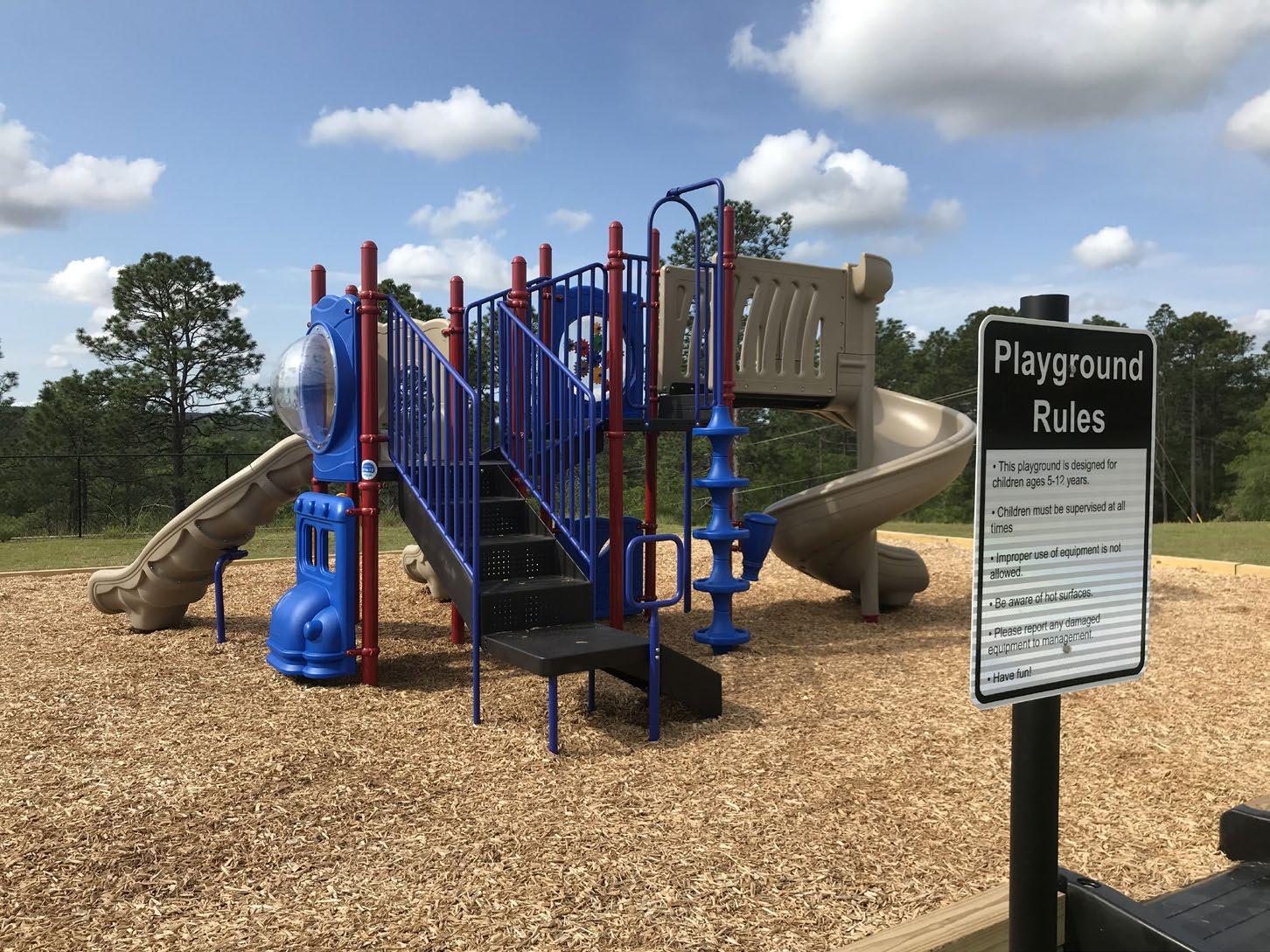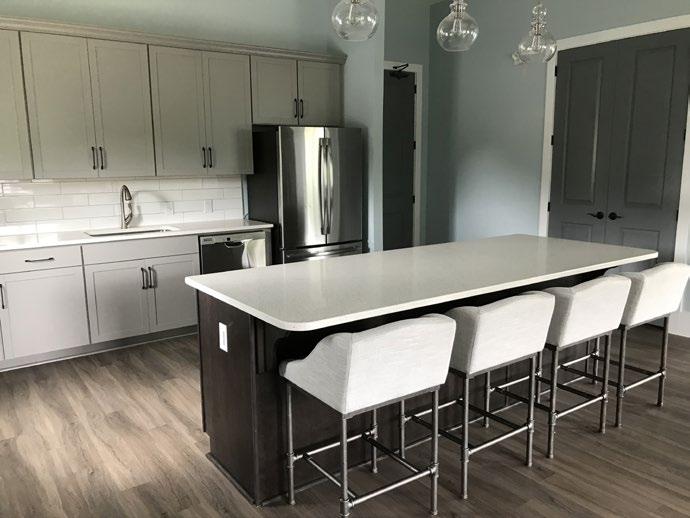
4 minute read
Building with Amenities
Amenities can be an excellent selling point for developers. After all, who wouldn’t want to spend a summer afternoon at a sparkling pool, burn off calories on a wellshaded walking trail or take the kids to a fancy new playground, all without leaving the friendly confines of their own neighborhood?

Advertisement
Mungo Homes’ new Bluefield community in Lexington features a large pool and cabana.

GREG LEHMAN, LAND DEVELOPMENT MANAGER, MUNGO HOMES
It’s all about competing with other builders and developers and offering that extra touch that homeowners can’t find in other neighborhoods, especially those that were built decades ago.
“Typically pools and playgrounds have always been provided as an amenity in neighborhoods of 200 lots or more, but, these days, if there’s a pool, we usually add a splash pad/sun deck and we always provide Wi-Fi,” said Greg Lehman, land development manager with Mungo Homes. “We want to make sure we provide what today’s customers expect and will enjoy.”
Lehman pointed to Mungo Homes new Bluefield community in Lexington, that amenity complex offers a 3,000-square foot pool with a lazy river, a 2,900-square foot cabana with covered outdoor seating for more than 50 people. There’s also a serving kitchen in the cabana which makes the cabana great for homeowners to reserve for special events. In addition, residents can enjoy the adjacent playground and also take their best friends to the community’s dog park.
According to Lehman, Mungo Homes has budgeted $1.5 million for the amenities in the Bluefield community. These amenity costs are distributed over the lots and do add to the price of every home. “We carefully weigh the benefits and the costs to make sure that we build communities that our customers can comfortably afford to live in. Because although the amenities do help sell homes they eventually must be maintained by each community’s homeowner’s association.”
He pointed out that in larger communities such as Bluefield, which eventually will be built out to 788 lots, that cost is spread out over a much greater number of homeowners. At Sterling Bridge, where Mungo also is building, there are only 258 lots. That community has a clubhouse with a serving kitchen, and a swimming pool, but it does not have a lazy river or a dog park.
“If a developer wants to put in a pool, it might cost $300,000, and that goes to the cost of the house,” said Shelton Twine, chief operating officer at Great Southern Homes.
Mike Satterfield, the chief executive officer at Great Southern, added that providing a pool in a community of, say, 150 homes, would increase the price of the lots by $2,000 to $2,500 each.
“For us, its project specific,” Satterfield pointed out. “There are certain markets where you need a pool. You need at least 150 lots to make the math work. But it depends on what’s in the market and who you are competing against.”
“In a small community, the end buyer might be looking at several thousand dollars per year in HOA payments,” Twine added. “It doesn’t make financial sense for a lot of them.”

Above and right: The clubhouse at Mungo Homes community Portrait Hill in Chapin. Other amenities include include a Jr. Olympic pool, amphitheater and walking trails.


According to Twine, pools and tennis courts are excellent sales tools, but only 15% to 20% of homeowners actually use them. He said Great Southern prefers to offer amenities that encourage people to spend time outdoors in other ways, such as sidewalks, open spaces, picnic tables and dog parks.
To Great Southern, location is an amenity. For example, its Park West neighborhood in Chapin is adjacent to Crooked Creek Park, a facility that offers an indoor gym and tennis courts, as well as soccer and baseball fields, “a built-in amenity right in their backyard,” Satterfield pointed out. Residents of two other
Great Southern Homes neighborhoods, Hidden Cove and The Cove, can access Lake Murray from their communities’ kayak launch.
Lehman mentioned one more important amenity related to the impression people get when they enter a Mungo Homes community for the first time: “We take great care in the design and construction of our community entranceways. They provide a sense of arrival, and no matter whether a homeowner lives in a 1,000-square-foot house or a 5,000-square-foot house, they can be proud when they enter their neighborhood.” u










